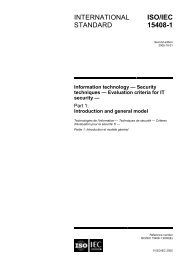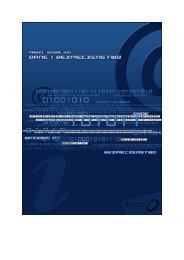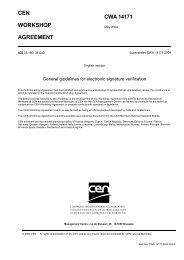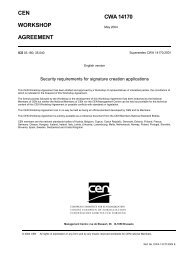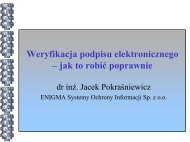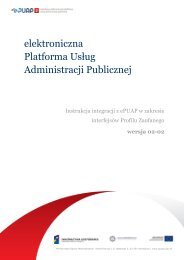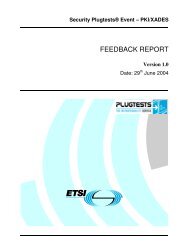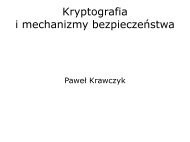When electronic signature becomes a information services ... - IPSec
When electronic signature becomes a information services ... - IPSec
When electronic signature becomes a information services ... - IPSec
Create successful ePaper yourself
Turn your PDF publications into a flip-book with our unique Google optimized e-Paper software.
If, after twenty years of X.509 and ten years of advanced <strong>electronic</strong> <strong>signature</strong>s, all the items set<br />
out in the CROBIES diagram entitled ‘Key success factors of eSignatures’ are red and marked<br />
as ‘insufficient’ or ‘inappropriate’, 67 then it means that the concept ought to be reconsidered,<br />
and it cannot be resolved by slightly changing interpretations of Directive 1999/93/EC. Perhaps<br />
it is time to rethink the whole concept of the Directive.<br />
The present legal framework has approached <strong>electronic</strong> <strong>signature</strong>s by attempting to build a<br />
‘universal theory of everything’ and too little discussion has been given to the forms of<br />
<strong>electronic</strong> <strong>signature</strong>s that are actually used every day, and to technical products that act to help<br />
provide for security. Even if the ‘what authors of Annex III really meant’ type casuistry is<br />
finished with a consensus by the experts (whoever they may be) at around 2020, no one will be<br />
interested in the solution. The world will have move forward, new problems will appear, and by<br />
that time any potential savings to be obtained from simpler solutions that could have been<br />
provided quickly will have failed to be made.<br />
This article sets out a number of reasons why the qualified <strong>electronic</strong> <strong>signature</strong> alone is never<br />
going to work. The various products based on the model of Directive 1999/93/EC – advanced<br />
<strong>signature</strong>, advanced <strong>signature</strong> with qualified certificate and the latter with SSCD – can all be<br />
considered options, depending on how much security is required by a given process. Processes<br />
should be designed in respect of the purpose, not the other way around. Risk analysis and costbenefit<br />
analysis should be used to select adequate techniques and then they should be amended<br />
by how easy they are to use and common sense.<br />
There are some good examples in the Commission activities related to the <strong>electronic</strong><br />
authentication. The first was the Commission Decision 2009/767/EC mentioned above.<br />
Another is IDABC Authentication Policy, a document that was published in 2004 as part of<br />
IDABC, 68 and the aim of the document is to demonstrate the purpose of authentication and how<br />
it can be used for useful <strong>services</strong>. In the Policy, the European Commission produced reasonable<br />
guidelines to establish controls that are proportional for generic public administration processes<br />
that can be used as a template for the design of the establishment of trust for public or private<br />
the forms of <strong>electronic</strong> <strong>signature</strong> that are reported in this journal and set out in Stephen Mason, Electronic Signatures in Law (2nd edn, Tottel,<br />
2007).<br />
67<br />
Study on Cross-Border Interoperability of eSignatures (CROBIES), Head Document, Figure 2, page 10 (version 1.0 29.3.10).<br />
68<br />
IDABC (Interoperable Delivery of European eGovernment Services to public Administrations, Businesses and Citizens);<br />
‘European Interoperability Framework for Pan-European eGoverment Services’, version 1.0 which apaers to be the ‘final’ version<br />
http://ec.europa.eu/idabc/en/document/3473/5887.



